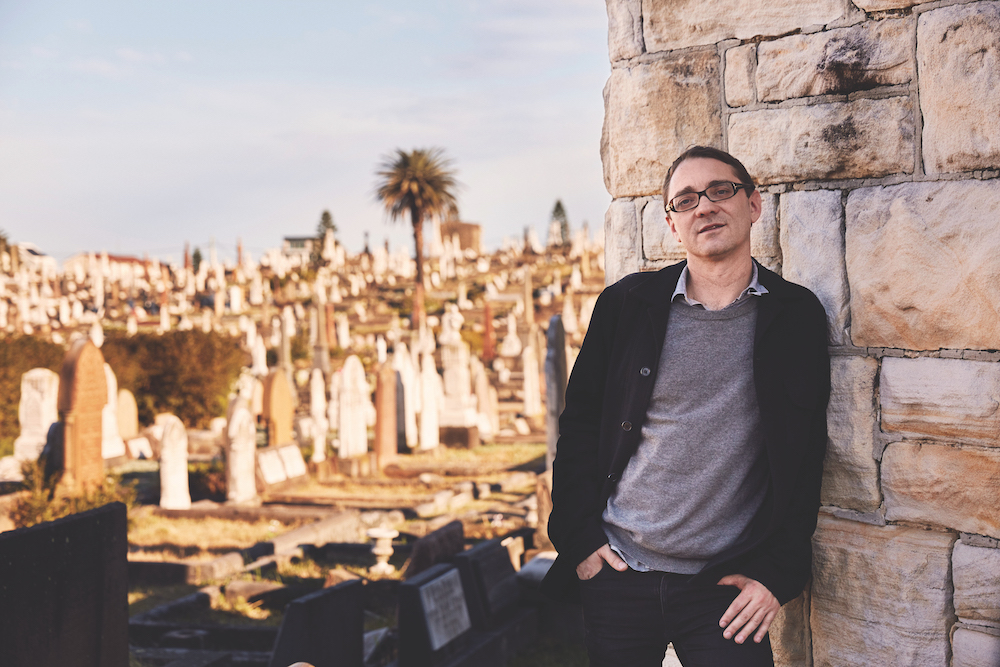Tim Silver: The Silver Bullet
Tim Silver’s work shoots straight from the hip, investigating the spaces between love, fragility, decay and death.
Words: Courtney Kidd
Photography: Nick De Lorenzo
Tim Silver’s studio is a laboratory of ideas. I’m talking about both the physical and conceptual spaces in which he works. Both breathe and pulse with thoughts about the passing of time and the unfolding processes of life and decay. They are themes that resonate with viewers and that is Silver’s charm; to connect his audience with big metaphysical issues via a very intimate, tactile working with materials.
Silver is discussing his forthcoming exhibition at Sullivan+Strumpf and I’m having trouble keeping up. He’s fast – New York fast. Perhaps that’s because he has just returned from a two-year sojourn in the Big Apple where he was working for Jack Shainman Gallery, an exhibition space that shows names like Nick Cave and Lynette Yiadom-Boakye. Silver was doing back-of-house installation and preparation. His own modus operandi is fascinating; the ways he uses materials, be they metals, photographs or videos, to underpin a grappling with mortality and self. He reminds us that the best art has something of the artist within: “Making art is an affirmation of your space in the world, your experience in the world, your pocket in it,” he says.
Quizzed about the impact of working in New York, Silver circumspectly notes that “it carries a particular mythology for a lot of artists, but one that is more a hangover from the 1970s and 1980s, when the internet wasn’t prevalent. Today you can follow artists and galleries online. The impact of New York is different now. Going anywhere has an influence on you, yes, but being home influences, too.”
Silver is now ensconced in Sydney and when we speak he is getting ready for his show, The Distance Between Us. It’s a wonderfully expansive title and an exhibition that is eagerly awaited, not least by the swathes of collectors his work has attracted over the years. Some were lucky enough to catch his full-length body cast in the Yinchuan Biennale held in far northern China. The dramatic sculpture made of Timbermate Wood filler putty collapsed under its own weight during the course of the three-month event. Others became hooked on works that included a video of his own head made of sawdust, which exploded into hundreds of fragments.
Then there were the toy cars and a Vespa scooter made out of drawing crayon. There are also the more than 20 solo shows that Silver has staged and the international exposure he has garnered via art fairs such as Art Basel Hong Kong and Art Brussels, all contributing to his stellar profile.
The Distance Between Us plays with ideas around the nexus between creation and destruction, particularly in relation to the human body. The show comprises five pairings in glass, mild steel, bronze, copper and ash. They are ghoulishly beautiful, resonant with the weight of antiquity and the contemporary making. “The majority of the objects in the show operate as mirrors of each other, a teaming up of objects and figures. The distance referred to in the title is conceptually about the distance between figures and relationships.” That distance also alludes to the discourse between intimacy and impermanence, familiarity and absence.
The physical medium of casting lends itself to exploration. It was the late artist Stephen Birch who taught Silver how to cast. “I was living just near his studio,” says Silver. “He introduced me to the idea of exhibiting works, creating an installation of works, letting them feed off each other.
“The earliest castings have been uncovered in Mesopotamia, approximately 3200 BC. The technology continues to evolve; I myself am utilising techniques developed in the 20th century. I’m applying these processes to forms I have visited: crypt figures from the Incas, mummified figures from Mexico and preserved bodies from Pompeii.”
Silver has also been looking at the work of the 18th-century German Austrian, Franz Messerschmidt, known for sculpting garish “character heads” – their faces contorted, angst-ridden.
And while the artist’s surname might have hinted at a vocation in metalworking, he says he didn’t expect to be working with the medium. In fact, he describes his transition to art as a student as being rather last minute.
“I studied painting at art school, but I can’t paint. It’s the discourse of painting that influences me. This show is sculptural but referential to the history of painting and I’m fascinated by the baggage; the appreciation people bring to materials. It is very personal. They carry their own understanding to the pieces and that is the connection that I hope evolves between audience and work.”
This article was published in Art Collector issue 90, Oct-Dec 2019.









